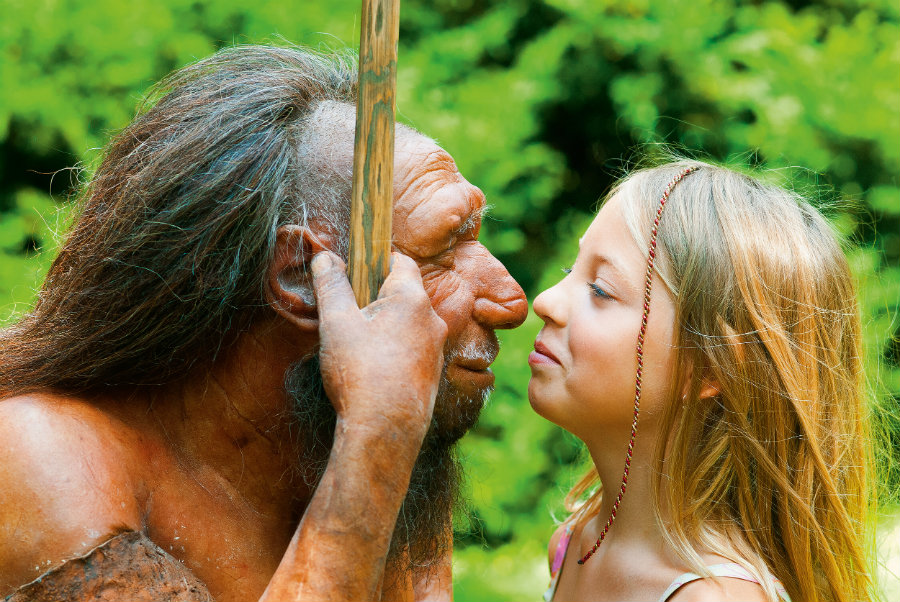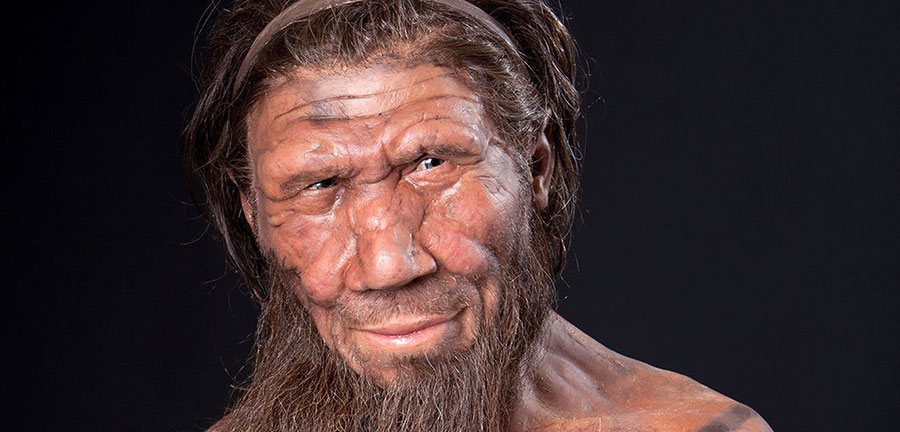A new study revealed that at least 2 percent of the genomes in non-African modern human genetic traces are comprised of Neanderthal DNA.
The last Neanderthal died 30,000 years ago, but as the species lived, it interbred until about 50,000 years ago, leading to Neanderthal DNA residing inside today’s humans. Researchers are now trying to figure the purpose of these genes and what do they represent in our bodies. Their impact may be significant or too small to notice, but all goes to prove that humans can always learn about their ancestors by looking unto themselves.

We all carry a little Neanderthal inside
The DNA tells the RNA in our cells how to produce proteins and more complex structures. Cells can choose, ignore, or modify certain genes to produce RNA, which is a critical component of biological development.
According to researchers, recent studies suggest that prehistoric genes may influence many genetic features. One of these studies evidence that Neanderthal alleles act upon a wide range of conditions, such as depression, hypercoagulation, and even tobacco use.
Even so, most of what researchers know so far about Neanderthal genes having an effect on modern humans has to do with phenotypes, being impacted by hybridization. On the other hand, the functional mechanisms related to these associations are unknown.
To determine how Neanderthal genes impact our DNA, researchers tested for allelic differences in gene transcription. Similar efforts have taken place before, but none has been able to combine all the information simultaneously. Researchers developed an approach for analyzing expression data to estimate what each allele accounts for in variability between individuals.
Human DNA: Hundreds of thousands of years in the making
They analyzed RNA sequences on the Genotype-Tissue Expression Project, looking for people who carried Neanderthal versions of any gene. For each gene within the dataset, researchers compared how the two DNA alleles were expressed in 52 different types of tissues distributed throughout the whole body.
In particular, the expression of Neanderthal alleles was significantly lower in the testes and the brain, which goes to prove that these parts of the body evolved much faster compared to the rest. This is supported by the evidence showing that the first variations of a Neanderthal started occurring at least 700,000 years ago.

Results revealed that Neanderthal-Introgressed haplotypes are associated with human phenotypes. These are height, schizophrenia, cystic fibrosis lung function, systemic lupus erythematosus, interleukin levels, optic disc size, cleft hip, serum creatinine levels, and pulmonary interaction with smoking.
Apparently, these variants are the result of the hybridization between Neanderthals and other species of humans. Based on previous theories, researchers realized that Neanderthals suffered from many weakening mutations, ending up in what they classified as population bottlenecks. These ailments reduced the survivability rate of Neanderthals by at least 40 percent compared to modern humans.
“We find that for about 25% of all those sites that we tested, we can detect a difference in expression between the Neanderthal allele and the modern human allele. Previous work by others had already suggested that this allele affects alternative splicing. Our results support this molecular model, while also revealing that the causal mutation was inherited from Neanderthals,” stated lead author Rajiv McCoy according to Science Daily.
Researchers report that when a Neanderthal mutation is present, the cell removes a segment of the mRNA that’s expressed in the modern human version. This results in a modified version of the protein because of the existence of a Neanderthal ancestor.
Even if the Neanderthal genes known to have an effect on schizophrenia and other conditions have been identified, their precise way of acting is still a mystery. On the study, authors claim that hybridization between modern humans and Neanderthals increased our genomic complexity and that it’s something that must be taken into account up to this day to understand the more complex aspects of evolution and genetics.
Now, researchers are planning on focusing on other species known to have crossbred with humans. This is to determine how different species contribute to gene expression, by comparing them side-by-side with other genetic sequences.
“Weakly deleterious variants that could persist in Neanderthals could not persist in humans. We think that this simple explanation can account for the pattern of Neanderthal ancestry that we see today along the genome of modern humans,” stated postdoctoral researcher Ivan Juric to Phys.org.
The genetic differences between modern humans and Neanderthals span the whole spectrum of human genes, as assured by McCoy. The differences reveal how our genes express themselves on different parts of our body, showing what traits appeared to be more important for our ancestors.
From this discovery, researchers show that Neanderthals are not as distant as we might think, even if they split from our African ancestors over 500,000 years ago. Archaeological evidence indicates that they had a diverse and advanced culture, according to the DNA samples retrieved from fossils which in turn allowed researchers to find out more about their genome sequence.
Source: Cell
